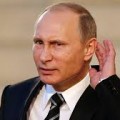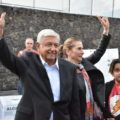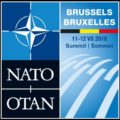Within Russia, the government has both provoked and suffered from Islamic extremism.
In most cases, current claims of discrimination against Muslims by those not of the Islamic faith within the western world are without substantial merit, particularly since the conclusion of the 1990’s Bosnian conflict. Indeed, most repressive acts are the result of internal disputes within the Islamic religion. Witness, for example, the ongoing fighting between Shites and Sunnis, or the depredations of ISIS and the Taliban against co-religionists who differ from their tyrannical theological views. It is ironic that Muslims living within Israel have more religious (and political) freedom in the Jewish state than in nearby Islamic nations.
But the long-standing discrimination against Muslims within Russia has gained new attention following Moscow’s invasion of Ukraine and its takeover of Crimea.
A Wilson Center study describes the genesis of current Russian-Muslim relations: “When the [Russian] state, both central and regional, began to confront the threat they perceived from Islam to state power, they used two main tools. First, they relied on the use, and abuse, of law enforcement and security agencies to kill, arrest, and intimidate local leaders and believers alike. Second, they instituted laws and propaganda to label certain branches of Islam, and their believers, as extremist.”
It would be misleading to ignore the horrendous acts of Islamic extremists in establishing the Russian antipathy towards Muslims. In 2004, for example, Chechen-based terrorists massacred 335 schoolchildren and parents in Beslan, Russia. Whatever the underlying causes of the Russian-Chechen dispute, the murder of schoolchildren was unforgivable, and served at the very least as a substantive justification for the Kremlin to expand its repressive acts.
One analysis of the conflict noted that “Anti-Muslim feelings were stoked by the war in Chechnya and terrorist attacks by Chechen fighters in the 1990s and early 2000s. Muslims that live in places where they are a minority harassed, humiliated and talked about by non-Muslims in muffled whispers. In the early 2000s, Russian newspaper ran pictures of local Muslim leaders next to pictures of Osama bin Laden. Hate crimes and attacks are directed at Muslims. Putin has called for tolerance and stated that Islam is a peaceful religion but at same time he has characterized the war in Chechnya as battle between Christians and Muslims and has said, ‘If you are a Christian you are in danger.'”
Aljazeera notes that Moscow’s invasion of Crimea has had a particular impact on Muslims. Muslims, knowing the repression of their faith by Russia, resisted the takeover, and some have been arrested and prosecuted for doing so.
Writing in Politico, Colin P. Clark states that “ Russia is fast replacing the United States as the No. 1 enemy of Al Qaeda, the Islamic State and other Sunni jihadist groups motivated by violent and puritanical Salafist ideology. This shift is rooted in recent Russian actions in the Middle East—including its escalating intervention in Syria and its moves toward intervention in Libya with the recent deployment of special forces to an air base in Egypt—that have drawn the ire of militant Sunnis worldwide and elevated Russia as the jihadists’ top target.”
Moscow’s actions are resulting in significant numbers of Russian Muslims joining the ranks of terrorist groups.
Despite failing to provide a prosperous economy and leading a national government that is, essentially, a corrupt oligarchy, Vladimir Putin continues to enjoy popularity within Russia by casting himself as a bulwark against imaginary threats from western nations, and against threats, some real, some not, from Muslims, and some of which are reactions to his own repressive policies. Attacks by Islamic extremists have provided the Russian president with an excuse to expand his own powers and the intrusive actions of his intelligence services.
Frank Vernuccio serves as editor-in-chief of the New York Analysis of Policy and Government.

















Follow Us